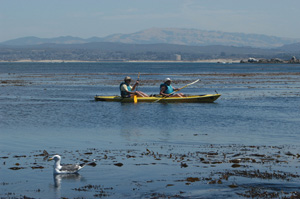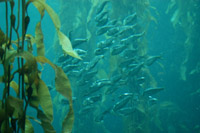National System for Marine Protected Areas Launched by U.S. Departments of Commerce and Interior
April 22, 2009
In an effort to conserve critical natural and cultural marine resources, the U.S. Departments of Interior and Commerce are partnering with federal, state and territorial agencies to form a National System of Marine Protected Areas (MPA).
“This new national system provides a mechanism for all levels of government to work together to leverage resources, coordinate regional planning, and manage marine protected areas as a system,” said Jane Lubchenco, Ph.D., under secretary of commerce for oceans and atmosphere and NOAA administrator. “We will continue to work with federal, state, tribal and local governments and stakeholders to share best practices for effectively achieving common marine conservation goals.”
Two hundred and twenty-five (225) existing MPAs managed by various agencies will initially enter the system, which aims to enhance protection of marine resources, build partnerships to address issues affecting MPAs, and improve public access to scientific information and decision-making about marine resources. The national system does not bring state, territorial or local sites under federal authority, nor does it restrict or change the management of any MPA.
While MPAs have been established throughout the U.S. for decades, there has not been an overarching mechanism to coordinate effective ecosystem management. About 100 federal, state, territory and tribal agencies manage the nearly 2,000 MPAs across the country, often with no coordinated strategy.
MPAs are areas where natural or cultural resources are given greater protection than in the surrounding waters. In the U.S., these areas may span a range of habitats including the open ocean, coastal areas, inter-tidal zones, estuaries and the Great Lakes. The majority are ‘multiple-use’ areas, which allow fishing, diving, boating, swimming and other uses. ‘No-take’ MPAs allow human access but prohibit extraction or significant destruction of natural or cultural resources. They are sometimes used as research and monitoring zones, to protect spawning or nursery grounds, or to protect ecologically important deep-water habitats.
Eligible existing MPAs were invited to nominate themselves for inclusion into the national system beginning in November 2008. The second round of nominations will begin later this year. Priority conservation objectives will continue to guide development of the national system.
The value of MPAs as a tool for protecting biodiversity and restoring fish populations within ecosystems is well documented. Many sites included in today’s charter group have been the subject of scientific studies comparing commercially and recreationally important fish populations both inside and outside the boundaries of the MPA. In the Tortugas North Ecological Reserve in the Florida Keys, studies on the number of fish populations were conducted before and after establishment of the reserve. Scientists found that three species of commercially important fishes increased in abundance and size within three years inside the reserve.
“MPAs are a critical tool for conserving cultural resources, marine species, habitats and ecosystems, and a national system will make this tool even more effective,” said Will Shafroth, acting deputy assistant secretary of interior for fish, wildlife and parks. “The diversity of sites accepted into the national system today help ensure that it is truly a representative system. This is a major step in the nation’s marine conservation efforts, and demonstrates our willingness and ability to work together to conserve our common marine heritage for future generations.”
NOAA understands and predicts changes in the Earth's environment, from the depths of the ocean to the surface of the sun, and conserves and manages our coastal and marine resources.

